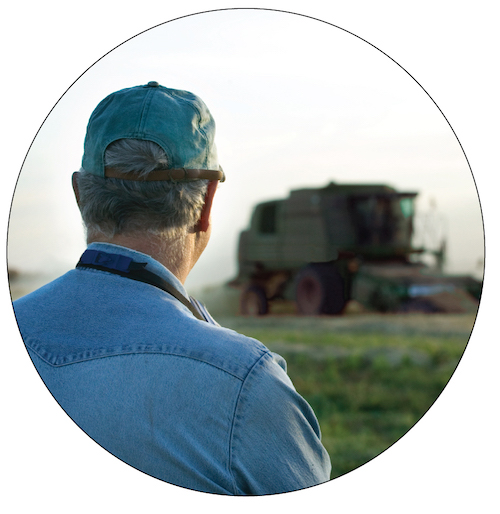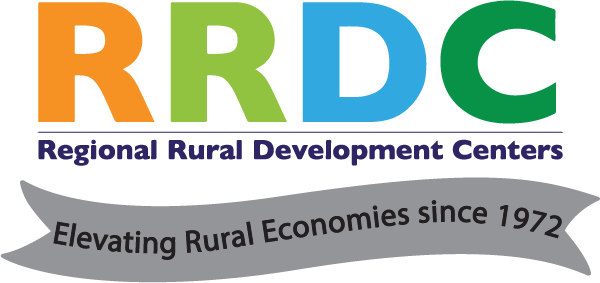Completed National Initiatives
The RRDCs have a long history of collaborating to address national issues. Below are some of the initiatives we've undertaken in the recent past.

Listening Sessions
Listening Sessions Initiative on Rural Community, Economic, and Workforce Development
In the wake of multiple chronic challenges exacerbated by the COVID-19 pandemic, rural communities and small towns across the United States are beginning to build back from the associated impacts on their economies, workforces, and communities. These recovery efforts pose critical questions of where and how to invest. To identify where stakeholders engaged in rural development see the greatest need and the greatest opportunity, the Regional Rural Development Centers have embarked on a process to collect feedback through a year-long initiative. This feedback will be shared with USDA NIFA and other federal partners as stakeholder feedback. Visit the Listening Sessions homepage.

Agricultural Marketing Assistance
Agricultural Marketing Service Technical Assistance Program
The Agricultural Marketing Service Technical Assistance Program (AMSTA) harnesses the capacity of the Regional Rural Development Centers and the State Cooperative Extension Service to deliver a cost-effective federal education program to rural communities and underserved audiences. A total of 137 trainings were offered in all 50 states, plus Puerto Rico and the U.S. Virgin Islands. This national grant-writing curriculum was collaboratively designed by USDA, eXtension, and the RRDCs for potential applicants to the USDA Agricultural Marketing Service's Farmers Market and Local Food Promotion Program Grants. Each state-level, train-the-trainer session was delivered by a state Extension staff member.

Behavioral Health Planning & Evaluation
Community Assessment and Education to Promote Behavioral Health Planning and Evaluation
The Community Assessment and Education to Promote Behavioral Health Planning and Evaluation (CAPE) is dedicated to identifying and sharing best practices for benchmarking community behavioral health. Funded by the Department of Health and Human Services' Substance Abuse and Mental Health Services Administration (SAMHSA) and facilitated by the United States Department of Agriculture's National Institute of Food and Agriculture, project members are drawn from universities across the United States. Available for viewing/downloading are Community Behavioral Health Training, Substance Abuse/Opioid Web Resources, and 29 webinars.

National Agricultural & Rural Development Policy
National Agricultural and Rural Development Policy Center
The National Agricultural and Rural Development Policy Center (NARDeP) was formed by the Regional Rural Development Centers in response to the increasingly contentious and complex agricultural and rural development policy issues. The Center was funded by the USDA National Institute of Food and Agriculture (NIFA) under a competitive grant (Number 2012-70002-19385), and engages land-grant universities as well as national organizations, agencies, and experts to develop and deliver timely policy-relevant information around three signature areas identified by our Advisory Boards and these areas are:
- Energy and the Environment
- Food Systems Development
- Self-Employment and Entrepreneurship
Available for viewing/downloading are more than 50 policy briefs, data briefs, and reports.

Small Business Outreach Training
Small Business Innovation Research Outreach Training and Technical Assistance
The Small Business Innovation Research Outreach Training and Technical Assistance Program (SBIR OTTA) was a collaborative training and outreach effort between the Regional Rural Development Centers and the USDA's National Institute of Food and Agriculture. It aimed to increase awareness and understanding of USDA's SBIR grant program. The SBIR Program at USDA provides unique opportunities for the nation's small businesses to apply for and receive federal monies for research and development to support high-quality, advanced concepts related to important scientific problems in agriculture and other endeavors that could lead to significant public benefits. The SBIR Outreach Training and Technical Assistance Program provides informational and training webinars for Cooperative Extension and other agency personnel to successfully guide SBIR applicants through the proposal writing and submission process. View the infographic of SBIR OTTA outcomes.

RRDCs Support "Rural America Counts"
Rural America Counts: RRDCs Support the Call to Action
Improving the vitality and stability of rural communities in the United States continues to be an important public policy objective and is especially relevant in a rapidly changing global environment. With growing concerns over rising income inequality and rural depopulation, a healthy and vibrant rural America has a major role to play in supporting the United States as a global economic leader. Yet to be a strong and sound partner of urban America, rural communities require public and private support to build physical and human capacity. A necessary condition is legislative authority and appropriations for organizations and research and outreach programs that assist decision-makers in investing in rural community development.
- Read the RRDC "Rural America Counts: Call to Action."
- View the infographic of Rural America Counts.

Stronger Economies Together
Stronger Economies Together (SET) enables communities and counties in rural America to work together in developing and implementing an economic development blueprint for their multi-county region that strategically builds on the current and emerging economic strengths of that region. Launched in 2010 by USDA Rural Development and the Regional Rural Development Centers and their land-grant university partners, this exciting initiative is now in place in more than 94 regions in 32 states. Creating, attracting, and retaining jobs as a single rural county in isolation from other nearby counties is becoming increasingly ineffective. In today’s global marketplace, economic development progress is more likely to be realized when rural and metro counties work together as a region to assess their resources and then design and implement plans that build on their assets and comparative economic strengths. View the infographic of SET outcomes.
